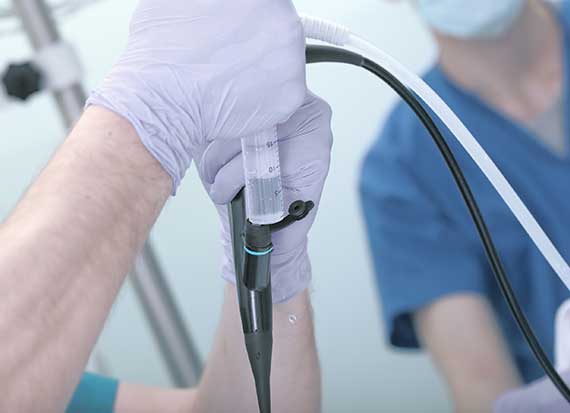Overview
To effectively treat urinary conditions, doctors need to find the cause and the extent of the problem. In cystoscopy, doctors closely examine the inner lining of the bladder and urethra to diagnose, monitor and even treat some urinary conditions.
During the procedure, our doctors use a cystoscope to see the visuals of the urinary system. They will insert the cystoscope through the urethra and check for blockages, stones or tumours. Our doctors can also use it to treat some bladder conditions or take a sample for further testing. Therefore, the type of cystoscopy depends on the reason for the procedure.
Why is it performed?
Our doctors recommend cystoscopy for various reasons, which include:
To find the condition’s cause: Various urinary problems cause similar symptoms, such as pain or blood, frequent urination or incontinence. Therefore, cystoscopy is performed to determine the cause and extent of the problem.
To diagnose bladder conditions: Cystoscopy can be performed to diagnose bladder diseases, such as cancer, stones and infection.
To treat bladder conditions: In some cases, it can be performed to treat bladder conditions and remove noncancerous tumours.
To diagnose an enlarged prostate: Cystoscopy can also be performed to identify a narrowing in the urethra caused by an enlarged prostate.
What is the preparation for the cystoscopy?
It’s a minimally invasive procedure and can take up to 30 minutes. Before the surgery, our doctors will take a urine sample to check for infections. They will prescribe antibiotics if the patient has a urinary tract infection or a weak immune system.
What is the procedure?
Before the surgery, our doctor will ask the patient to empty their bladder. Then, our anesthesiologist will give them general or local anaesthesia to avoid complications during the procedure. They will also numb the urethra and bladder with anaesthetic spray or gel. Our doctors will carefully insert the cystoscope through the urethra into the bladder.
During cystoscopy, our doctors examine the inner linings of the urinary system on a video screen. They might also take a tissue sample for further testing. The whole procedure can take up to 15 to 30 minutes, and the patient can continue with their daily routine.
Diagnosis & Treatment

Why choose Yashoda?

Latest & most-advanced medical care

Compassion in treating patients ensuring confidentiality

High standards in patient-centric care

Exceptional patient safety & maintenance


